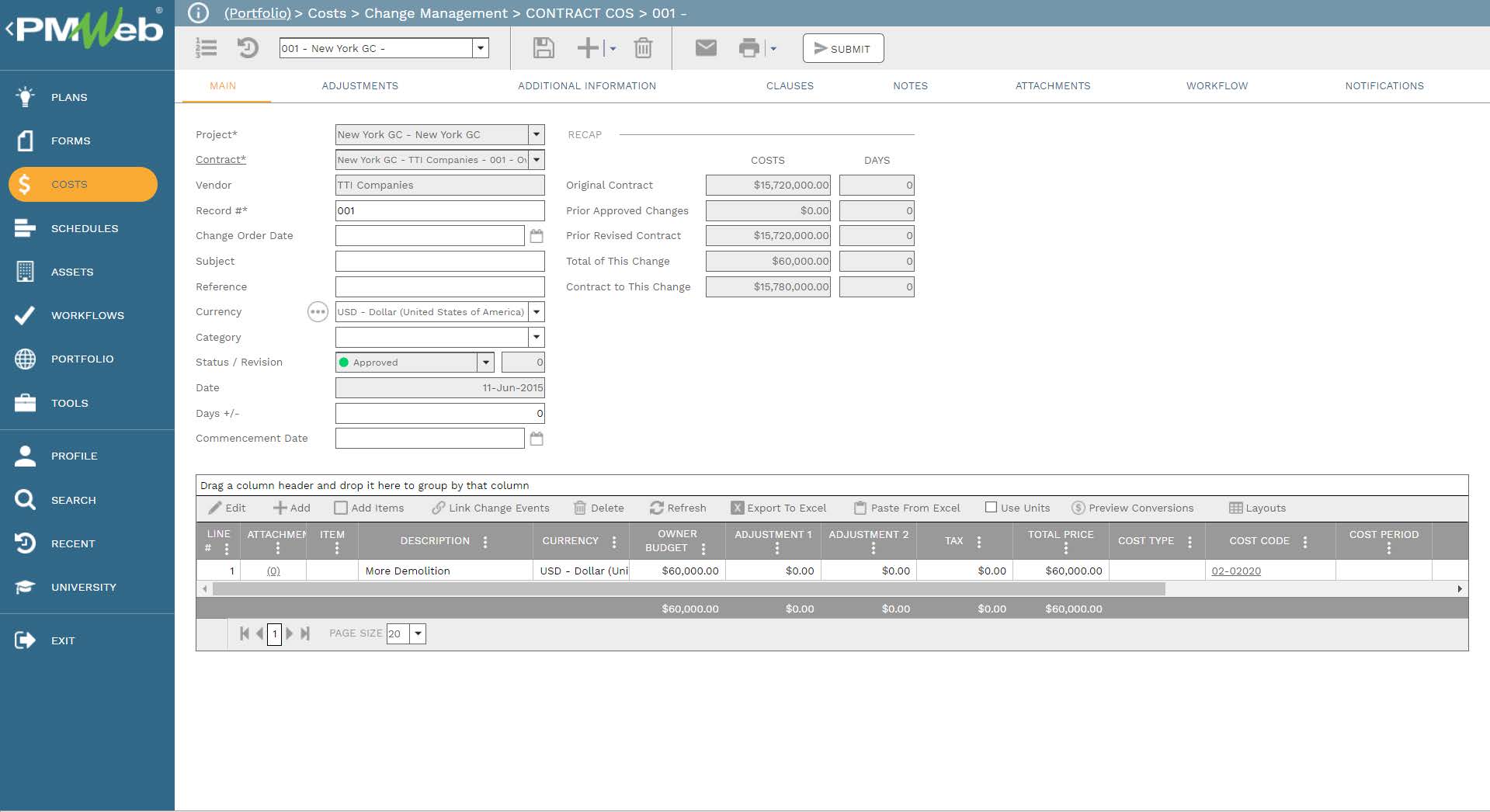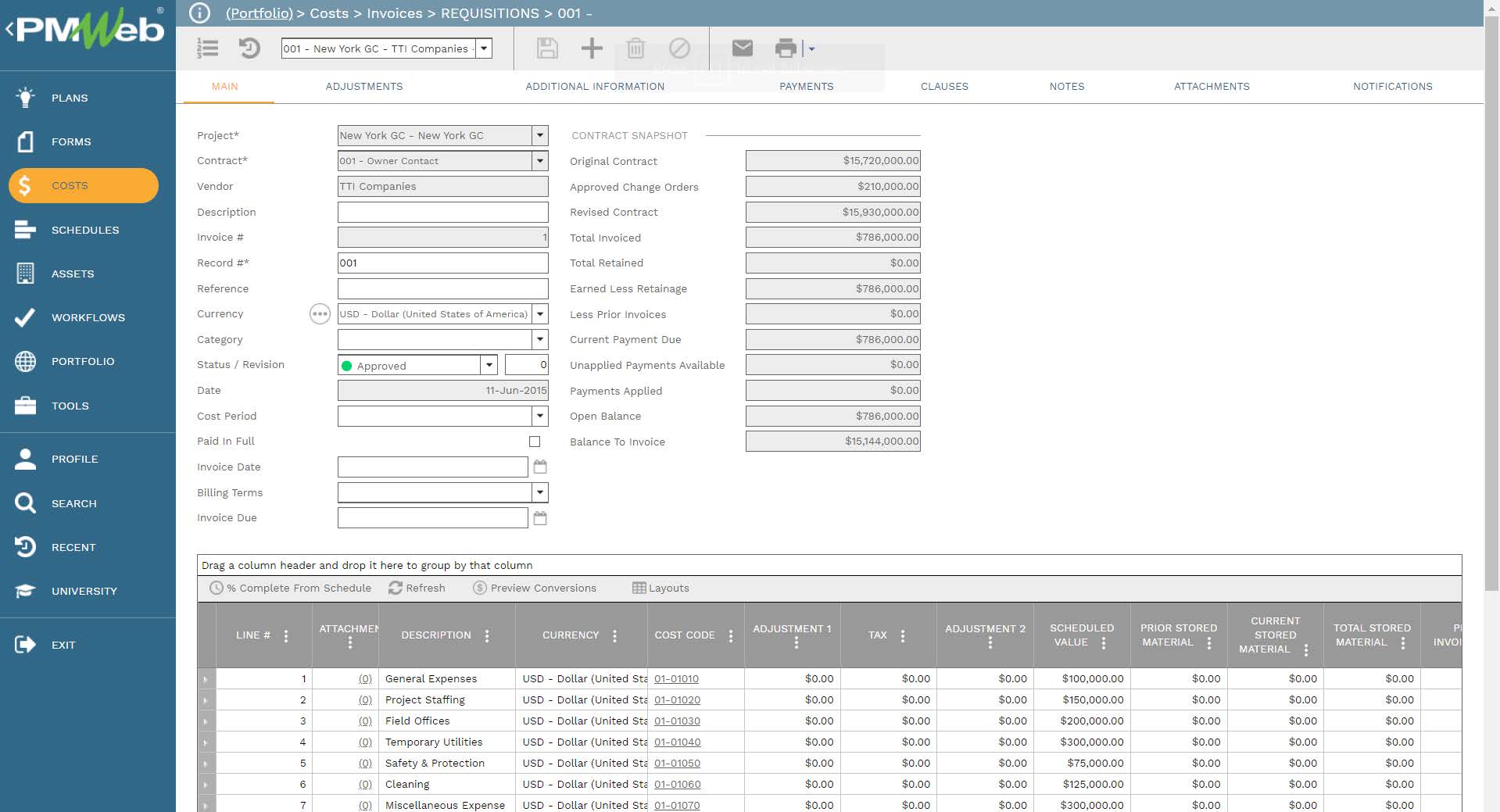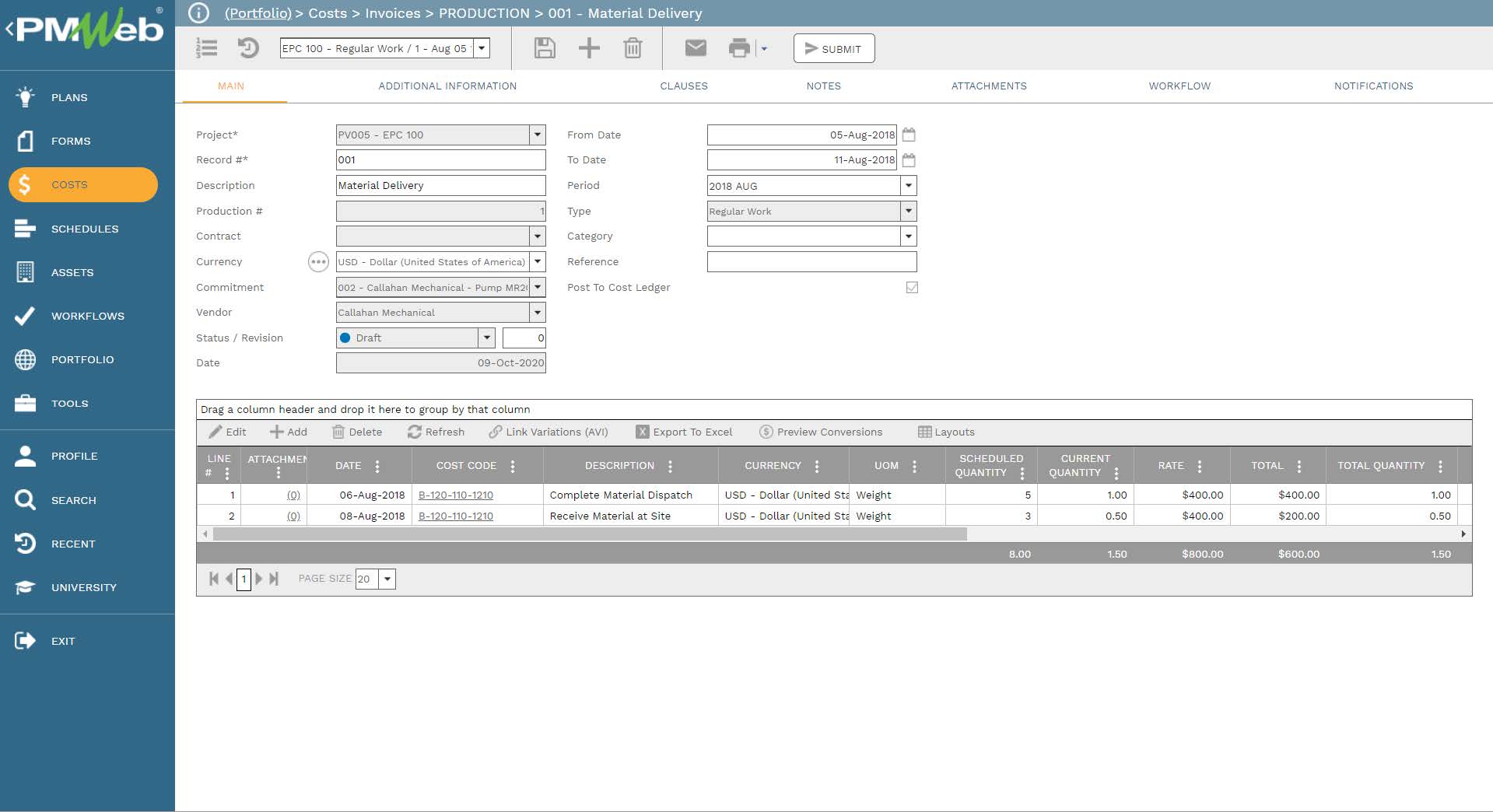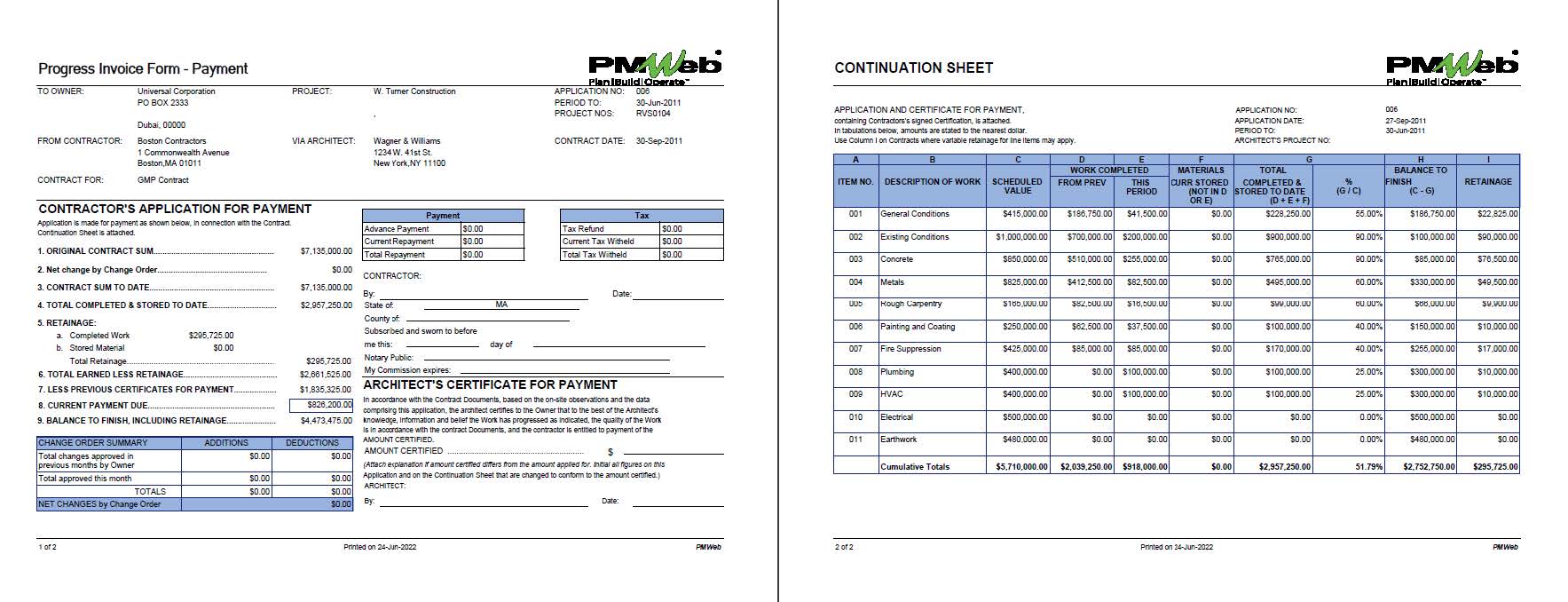Revenue management is mainly applicable to the project control system (PCS) that is being managed from the contractor’s perspective. The revenue or income contract agreement is the contract agreement between the project owner and the contractor. This contract is also the basis for the cost-loaded project schedule.
Having said that, project owners who manage the project control system (PCS) can also use the revenue or income contracts to capture the sales of the project’s assets like flats, offices, houses, and others as well as long-term lease or operation agreements. The revenue or income contract agreements can also be used on Public-Private=Partnership (PPP), Build-Operate-Transfer (BOT), and other types of project delivery methods where the project owner generates revenue or income of the project’s assets when it goes into the operation stage.
The PMWeb prime contract module helps capture all revenue or income contracts on a project. The PMWeb prime contract module allows copying and pasting the BoQ/SoV or revenue line items from MS Excel. Each line item should be associated with a cost breakdown structure (CBS) or cost account level, WBS level, project schedule activity, work package reference for EWP, PWP, CWP, or SWP, and the BIM object identification. In addition, and similar to other cost management processes in PMWeb, the commitment line items can be in different currencies. Further, a revenue or income contract can be selected to be either a unit price or a lump-sum agreement.

All changes to the revenue or income contact agreements are captured in the Contract Change module. If the project control system was managed by the contractor, then all change orders whether they were approved, pending approval, disputed, or withdrawn will be captured. This provides the contractor with a better understanding of the anticipated revenue that will be generated from the project.
Similar to all other PCS processes managed in PMWeb, all change orders must include all supporting documents relevant to the submitted change. These supporting documents, which could include drawings, specifications, and pictures, among many others, should get stored in the PMWeb Document Management repository. In addition, all records that are related to project communications, such as daily reports, meeting minutes, correspondence, submittals, RFIs, requests for inspection, permit, and occurrence reports, among many others need to be linked to the relevant potential change order or change order record.
In addition, assigning a workflow to the change order template ensures all changes that the contractor is raising in the project had been formally reviewed by the commercial, contract, legal and other departments before it gets formally submitted to the project owners of his authorized representatives. The change order request needs to be printed in the exact format set by the project owner in receiving such requests.
The project owner can also use the change order module to capture all changes made to the asset’s sale, long-term leases, operation, and others that apply to revenue or income contracts. All other features of attaching documents, linking records, and associating a workflow are also applicable.

As the project progresses, if the contract was the entity managing the PCS, the contractor uses the requisitions module the monthly interim payment certificates (IPC) for the approved work-in-place which needs to be formally submitted to the project owner or his authorized representative. If the PCS was managed by the project owner, the payment requisition allows issuing the invoices for the assets’ sales, long-term leases, and other sources of revenue.

For contractors whose revenue contracts with the project owner are remeasured contracts or contracts that the interim payment certificate (IPC) depends on the actual quantities in place that had been accepted, the PMWeb joint measurement module allows recording the details of those work items on daily basis for which at the end of each week, the captured work in place can be formally reviewed and approved. Those quantities become the basis for quantifying the approved work in place in the interim payment certificate (IPC).

The recipient of the requisition invoices whether they were issued by the contractor to the project owner or by the project owner to assets buyers and tenants will not have access to PMWeb. Accordingly, those invoices are to be printed in the exact required output format so they can either be wet-signed and stamped or digitally signed before they are sent to their intended recipients.
The PMWeb report writer allows designing those output forms in the exact format needed for each project. Those output forms have the branding and logos needed for the formal communication of those revenue invoices. The sample below is an example of the 150+ forms and reports that come ready with PMWeb.

Reference
The content of this article was extracted from the book titled “Let’s Transform: Enabling Digital Transformation of Capital Construction Projects Using the PMWeb Project Management Information System – 2nd Edition” by Bassam Samman.
The book provides project owners with oversight on how technology available today can support their efforts to digitally transform the management of their projects’ portfolios. For each capital project life cycle stage, PMWeb is used to detail how the relevant project management business processes can be digitalized to enforce transparency and accountability in delivering projects. In addition, MS Power BI was used to show how the real-time, trustworthy data captured in PMWeb can be aggregated, modeled, monitored, evaluated, analyzed, and reported at anytime, anywhere using any device.



